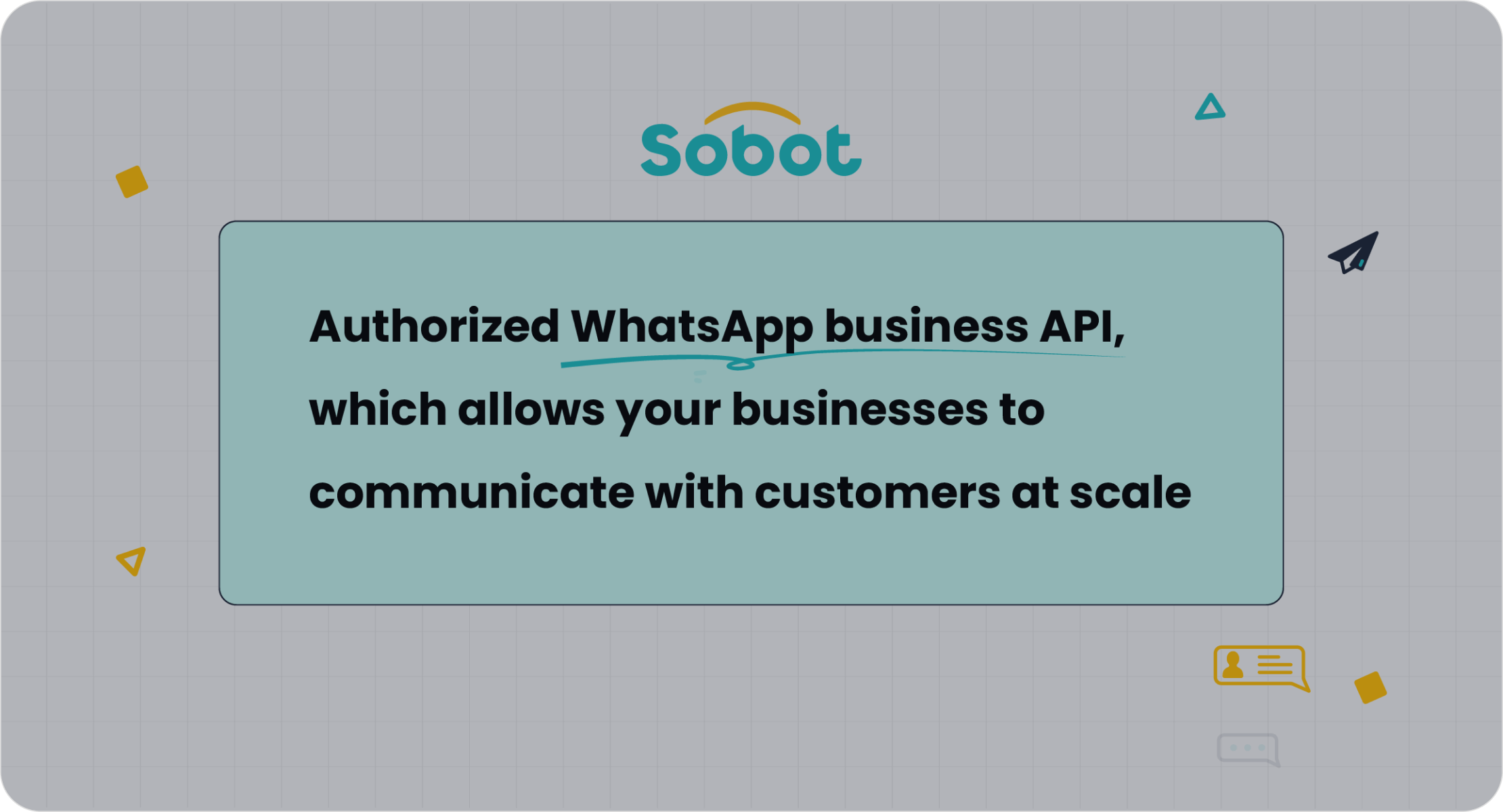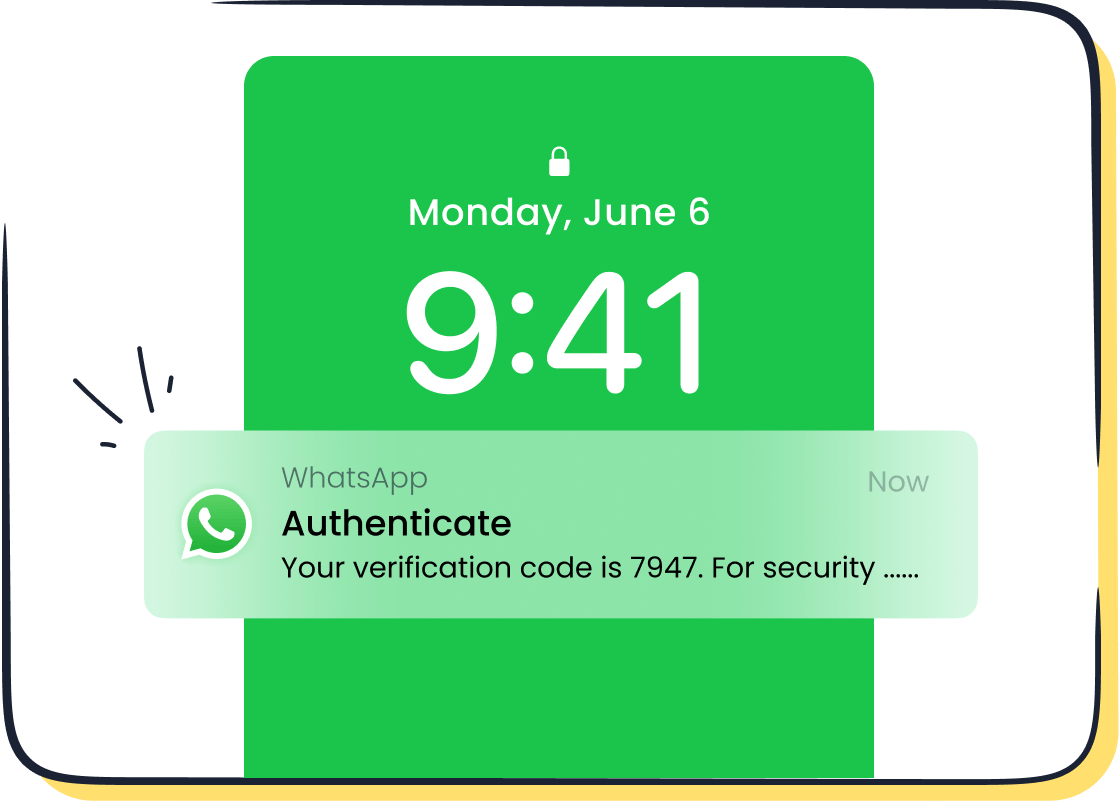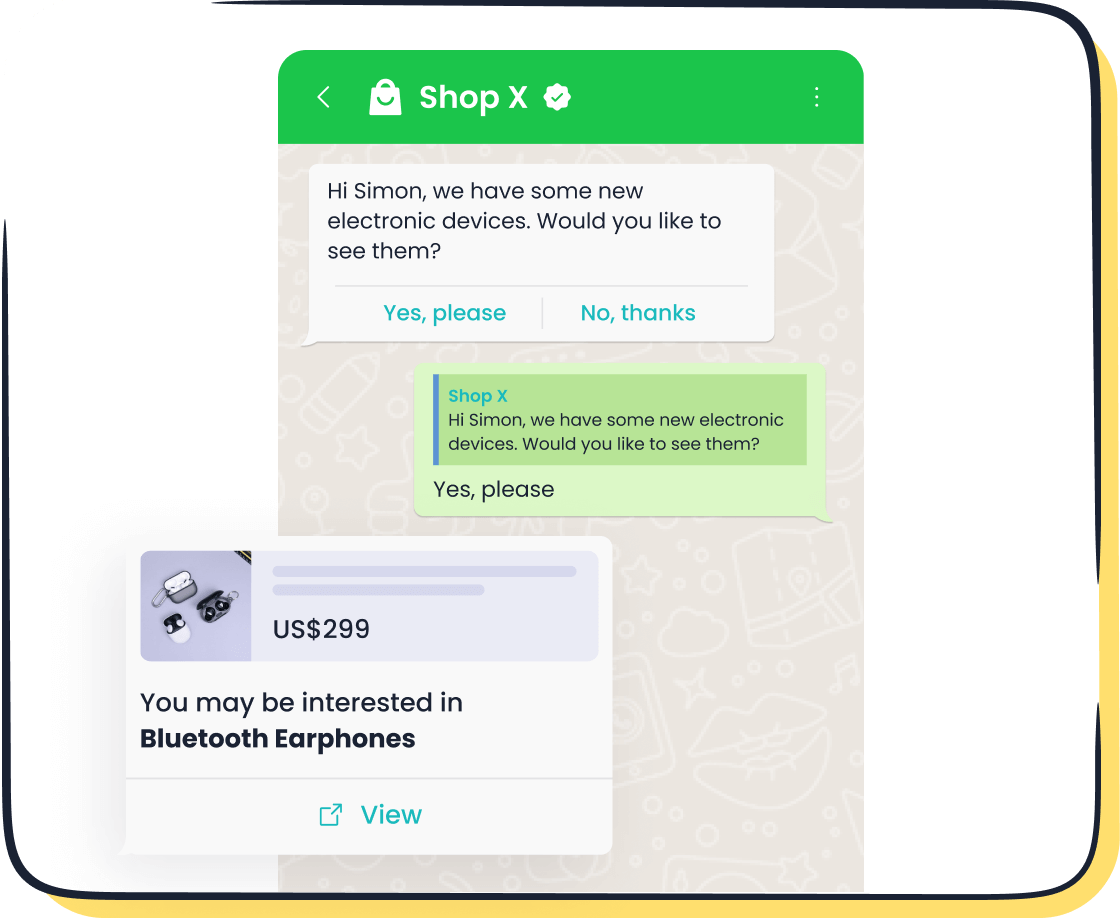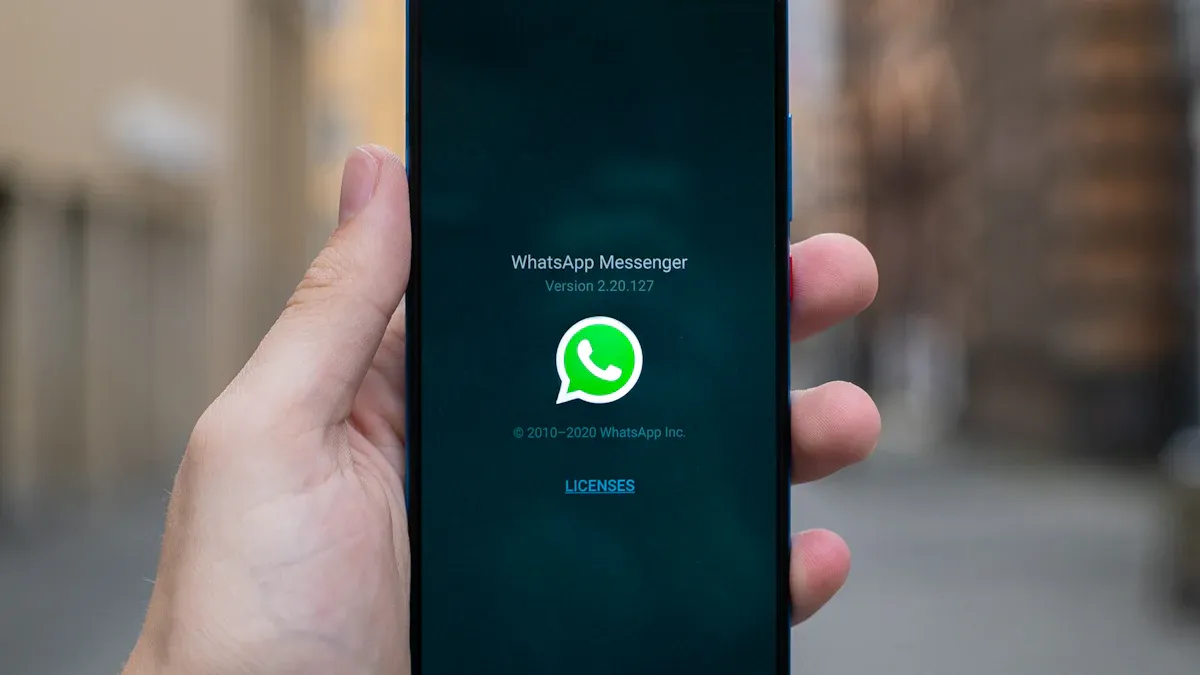What Makes a Message Formal on WhatsApp

You set the tone for formal communication on WhatsApp by using clear language, showing respect, and maintaining professionalism in every message. In customer service, a formal WhatsApp message can build trust and improve satisfaction—over 95% of customers expect quick, polite replies. Sobot, as an official WhatsApp Business Solution Provider, empowers you to deliver this standard. Sobot AI supports you with tools that streamline how to send a formal message on WhatsApp, ensuring each interaction reflects your brand’s values.
WhatsApp Etiquette

When you communicate with customers on WhatsApp, you set the standard for your brand. Following WhatsApp etiquette helps you build trust and maintain professionalism. Sobot recommends that you always follow official guidelines and industry standards to ensure every message reflects your company’s values.
Professional Greetings
Start every conversation with a clear and respectful greeting. Use formal titles and last names, such as "Mr. Smith" or "Ms. Lee," especially when you do not know the customer well. This approach shows respect and sets a professional tone. Customer service research highlights that using official titles and formal address is a primary indicator of formal communication. Avoid slang or casual phrases in your opening. For example:
Good morning, Mr. Johnson. This is Emily from Sobot Customer Support. How may I assist you today?
This type of greeting makes your message clear and polite. It also helps customers feel valued and respected.
Tone and Language
Choose your words carefully. Use formal language and avoid contractions or slang. Keep your sentences short and direct. Studies show that the right tone and language can make your WhatsApp messages more effective. You have only a few seconds to make a good impression, so clarity matters. A professional tone builds trust and encourages engagement. For example:
- "Thank you for reaching out to Sobot. We appreciate your feedback."
- "Please let us know if you have any questions about our WhatsApp Business API."
Limit emoji use to one or two per message, and only when appropriate. This keeps your communication friendly but still professional. Always follow WhatsApp etiquette and guidelines, such as obtaining user consent and respecting privacy. Good etiquette means you respect your customer’s time and preferences.
Tip: Review WhatsApp’s official business guidelines and Sobot’s best practices to ensure compliance and professionalism in every message.
Message Structure
Self-Introduction
A strong self-introduction sets the stage for a formal WhatsApp message. You should always introduce yourself at the beginning of a conversation, especially in customer service or business contexts. This helps your customer know who they are speaking with and builds trust from the start.
For example, you can write:
Good afternoon, this is Alex from Sobot Customer Service. I am here to assist you with your inquiry.

This approach makes your WhatsApp message clear and professional. When you use the WhatsApp Business API by Sobot, you can automate self-introductions for every new chat. This ensures consistency and saves time for your team. Customers appreciate knowing they are speaking with a verified business account, which increases their confidence in your support.
A formal message should always include your name, your company, and your role. This information helps the recipient understand the context and purpose of your WhatsApp message. In fast-paced environments, a clear self-introduction captures attention and sets a positive tone for the rest of the conversation.
Clarity and Conciseness
Clarity and conciseness are essential for every formal WhatsApp message. You want your customer to understand your message quickly, without confusion or extra details. Research shows that clear and concise communication helps people grasp the main idea, stay engaged, and avoid information overload. In WhatsApp customer service, this means you should use simple language and get to the point right away.
- Avoid jargon or technical terms unless necessary.
- Use short sentences and direct statements.
- Highlight the main purpose of your WhatsApp message early.
For example:
Thank you for contacting Sobot. Your order has shipped and will arrive in 2–3 business days.
This message is easy to understand and respects the customer’s time. The WhatsApp Business API from Sobot supports message templates that help you keep communication brief and effective. When you focus on clarity and conciseness, your formal message stands out and delivers value to your customer. This approach also improves engagement and satisfaction, which are key goals in customer service.
How to Send a Formal Message on WhatsApp

Timing and Frequency
You need to consider timing and frequency when you think about how to send a formal message on WhatsApp. Sending messages at the right time shows respect for your customer’s schedule and increases the chance of a positive response. Most business professionals expect to receive WhatsApp messages during business hours, usually between 9am and 5pm. For general consumers, early evening—between 6pm and 8pm—works best. Avoid sending messages late at night or on weekends unless the information is urgent or highly relevant.
Tip: Schedule your WhatsApp messages to arrive during business hours for professional contacts and early evenings for consumers. This approach helps you maintain a formal tone and avoid disturbing your recipients.
Studies show that sending no more than three formal messages per week keeps your audience engaged without causing fatigue. If you need to send reminders, space them at least 48 hours apart. This practice prevents your customers from feeling overwhelmed. News outlets, for example, send between one and four WhatsApp messages daily, but most business communication works best with fewer, well-timed messages.
Sobot’s WhatsApp Business API makes it easy to schedule messages in advance. You can set up automated workflows to deliver messages at optimal times, ensuring you follow best practices for how to send a formal message on WhatsApp. The API also allows you to track delivery and read status, so you know when your messages reach your audience.
Best Practices for Timing and Frequency:
- Send messages during business hours or early evenings.
- Limit formal messages to three per week.
- Space reminders at least 48 hours apart.
- Use scheduling tools, like Sobot’s WhatsApp API, to automate delivery.
Proofreading
Proofreading is a critical step in how to send a formal message on WhatsApp. Error-free communication builds trust and shows professionalism. Even a small typo can change the meaning of your message or make your business look careless. Before you hit send, always review your message for spelling, grammar, and clarity.
A step-by-step approach to quality control can help you maintain high standards:
- Draft your message using clear, formal language.
- Review for spelling and grammar errors.
- Check that your message is concise and easy to understand.
- Confirm that all names, dates, and details are correct.
- Use message templates in Sobot’s WhatsApp API to ensure consistency.
Note: Sobot’s WhatsApp API supports message templates and automated quality checks. These features help you avoid mistakes and maintain a professional image in every conversation.
In a recent study, researchers used a structured process to manage WhatsApp messages. They collected data, scheduled messages, logged delivery status, and reviewed reports weekly to identify errors or missing information. This rigorous approach led to better communication outcomes and higher engagement rates.
When you follow these steps, you show your customers that you value their time and trust. Proofreading every message is a simple but powerful way to improve your formal communication.
Quick Checklist for Proofreading:
- Double-check spelling and grammar.
- Make sure your message is clear and direct.
- Verify all details before sending.
- Use Sobot’s tools for automated quality control.
By focusing on timing, frequency, and proofreading, you master how to send a formal message on WhatsApp. These habits help you deliver clear, respectful, and professional communication every time.
Using WhatsApp Features with Sobot
Attachments and Media
You can make your WhatsApp messages more effective by using attachments and media. Sobot’s WhatsApp Business API lets you send images, videos, PDFs, and even product catalogs directly in chat. This helps you explain complex ideas, show products, or solve customer problems quickly. For example, you can send a product photo to answer a question or share a video tutorial to guide a customer through a setup process.
- Share infographics or charts to make data easy to understand.
- Use high-quality images to showcase new products or services.
- Send PDFs with detailed instructions or policy documents.
- Allow customers to send pictures of issues for faster support.
Tip: Use media only when it adds value. Keep your messages clear and professional.
Sobot’s integration with CRM systems means you can personalize these attachments for each customer. You can also schedule media-rich messages to go out at the best time, keeping your communication timely and relevant.
Group and Broadcast Messaging
Group and broadcast messaging help you reach many customers at once while keeping your communication formal and organized. With Sobot’s WhatsApp Business API, you can send broadcast messages to hundreds of customers instantly. This is useful for sending updates, promotions, or important announcements.
- Use broadcast messages for order updates, event reminders, or marketing campaigns.
- Organize contacts with labels to target the right audience.
- Set up automated replies to common questions, saving your team time.
Group chats work well for team support or project updates. Sobot’s shared inbox feature lets multiple agents handle group chats without confusion. Automated scheduling ensures your messages go out during business hours, which keeps your communication professional.
Note: Always use pre-approved message templates and respect customer privacy. This keeps your WhatsApp communication compliant and trustworthy.
By using these features, you can deliver timely, relevant, and formal messages that build trust and improve customer satisfaction.
Closing and Sign-Offs
Formal Endings
You should always close your WhatsApp messages with a formal ending. This step shows respect and leaves a positive impression. Use phrases like "Thank you for your time," "Best regards," or "Sincerely." These endings signal that you value the conversation and the customer’s needs. For example:
- Thank you for choosing Sobot.
- Please let us know if you need further assistance.
- Best regards,
Emily, Sobot Customer Support
A formal sign-off helps you maintain professionalism. It also reduces misunderstandings. According to a Harvard Business Review study, clear closings improve response rates by up to 20%. Sobot’s WhatsApp Business API allows you to use message templates for consistent, formal endings. This feature saves time and ensures every customer receives a respectful sign-off.
Tip: Always match your closing to the tone of your message. If you start formally, end formally.
Customer Experience
Your closing words shape the customer’s final impression. A thoughtful sign-off can boost satisfaction and loyalty. When you use Sobot’s WhatsApp Business API, you can automate personalized endings. This approach ensures every customer feels valued. Michael Kors, a Sobot client, saw a 95% customer satisfaction rate after improving their closing messages.
You can follow these steps to enhance customer experience:
- Use the customer’s name in your closing.
- Offer a clear next step or invitation to reply.
- Thank the customer for their time or feedback.
A strong closing supports your brand’s reputation. It also encourages customers to return. When you combine formal endings with excellent service, you create a positive experience that stands out.
You set your business apart when you send a formal WhatsApp message that follows WhatsApp etiquette. Clear greetings, concise language, and professional sign-offs help you build trust and boost customer satisfaction—just like Michael Kors did, achieving a 95% satisfaction rate with Sobot’s WhatsApp Business API. When you use Sobot’s solutions, you ensure every formal WhatsApp message meets industry standards. Apply these best practices daily to improve your customer communication and strengthen your brand’s professionalism.
FAQ
What is a formal WhatsApp message?
A formal WhatsApp message uses clear language, polite greetings, and professional tone. You avoid slang and emojis. You introduce yourself and your company. This style builds trust and shows respect. Sobot’s WhatsApp Business API helps you automate and maintain this standard in every customer conversation.
Why should you send formal WhatsApp messages in business?
Formal WhatsApp messages improve customer trust and satisfaction. According to Salesforce, 95% of customers say respectful communication matters. You show professionalism and care. Sobot’s solutions help you deliver consistent, formal WhatsApp messages that reflect your brand’s values.
How can Sobot help you send formal WhatsApp messages?
Sobot’s WhatsApp Business API offers message templates, scheduling, and automated quality checks. You ensure every formal WhatsApp message is clear, timely, and error-free. Michael Kors used Sobot to boost customer satisfaction by 95% with formal WhatsApp messages and efficient support.
Can you use media in a formal WhatsApp message?
Yes, you can use images, PDFs, or videos in a formal WhatsApp message. Attachments should add value and stay professional. Sobot’s WhatsApp API lets you send product catalogs, instructions, or order updates. Always keep your message clear and relevant to the customer’s needs.
How do you close a formal WhatsApp message?
You close a formal WhatsApp message with polite phrases like “Thank you for your time” or “Best regards.” This shows respect and leaves a positive impression. Sobot’s message templates help you use consistent, formal closings in every WhatsApp conversation.
See Also
Step By Step Guide To Batch Messaging On WhatsApp Business
Top Strategies For Integrating WhatsApp Into Your Website
Effortless Ways To Install WhatsApp On Your Website Smoothly
Reasons WhatsApp Chat Significantly Increases Website User Interaction
Easy Methods To Initiate WhatsApp Chats Without Saving Contacts
